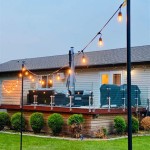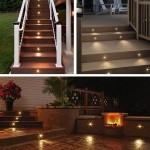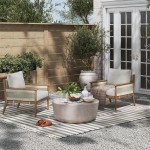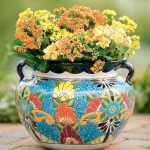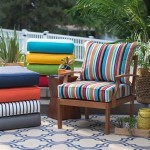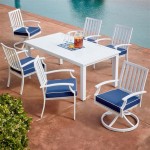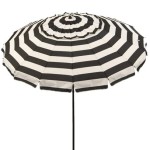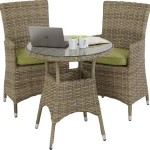Outdoor Furniture: Prioritizing Comfort and Style Without Cushions
Outdoor furniture plays a crucial role in extending living spaces and enhancing the enjoyment of gardens, patios, and balconies. While traditional outdoor furniture often relies on cushions for comfort, a growing segment of the market emphasizes designs that provide comfortable seating experiences without the need for separate cushions. This shift is driven by a desire for increased durability, reduced maintenance, and a streamlined aesthetic. The selection of outdoor furniture that does not require cushions involves a careful consideration of materials, construction techniques, and ergonomic design principles.
Material Selection for Cushionless Comfort
The choice of materials is paramount when selecting outdoor furniture designed to be comfortable without cushions. Different materials offer varying degrees of resilience, weather resistance, and inherent comfort. It is essential to consider the climate and the intended use of the furniture when making material choices.
Teak: Teak is renowned for its natural oils, which provide exceptional weather resistance and prevent rot, making it a popular choice for high-end outdoor furniture. The natural grain and warm color of teak contribute to its aesthetic appeal. Teak furniture can be designed with contoured seats and backs to provide comfortable support without cushions. However, teak requires periodic oiling to maintain its original color and prevent weathering to a silver-gray patina.
Aluminum: Aluminum is a lightweight, durable, and rust-resistant metal that is well-suited for outdoor use. Powder-coated aluminum frames can be shaped into various designs, offering a wide range of aesthetic options. For cushionless comfort, aluminum furniture often incorporates woven straps or mesh seating surfaces that conform to the body. The use of high-quality powder coating ensures that the finish is resistant to chipping, scratching, and fading.
Wicker (Resin/Synthetic): Synthetic wicker, typically made from polyethylene or PVC, is a durable and weather-resistant alternative to natural wicker. It offers a classic aesthetic with added resilience against moisture, UV radiation, and insects. Synthetic wicker can be woven into intricate patterns to create comfortable seating surfaces that conform to the body. High-density polyethylene (HDPE) wicker is considered a premium option due to its superior durability and resistance to cracking or fading.
Recycled Plastic: Recycled plastic lumber is an environmentally friendly option that offers excellent weather resistance and durability. It is often made from recycled milk jugs and other plastic waste, diverting it from landfills. Recycled plastic furniture can be molded into various shapes and designs, providing comfortable seating without the need for cushions. It is also resistant to rot, insects, and moisture, making it a low-maintenance option. The color is typically integrated throughout the material, minimizing the risk of fading.
Metal Mesh: Metal mesh, often made from steel or aluminum, provides a breathable and supportive seating surface. It is particularly well-suited for warm climates, as it allows air to circulate and prevents overheating. Metal mesh furniture is typically lightweight and durable, making it easy to move and maintain. The mesh can be powder-coated or otherwise treated to enhance its resistance to rust and corrosion. Ergonomic design is particularly important with metal mesh to ensure proper lumbar support and prevent pressure points.
Textilene: Textilene is a woven polyester fabric coated with PVC. It is often used for sling-style seating, providing a comfortable and supportive surface that conforms to the body. Textilene is weather-resistant, UV-resistant, and easy to clean, making it a practical choice for outdoor furniture. It is also resistant to mold, mildew, and fading. The sling design allows for air circulation, keeping the seating surface cool and comfortable in warm weather.
Ergonomic Design Principles for Enhanced Comfort
The absence of cushions necessitates a greater emphasis on ergonomic design to ensure comfortable seating. Factors such as seat height, back support, and armrest placement play a critical role in the overall comfort of cushionless outdoor furniture. Furniture should be designed to promote good posture and minimize strain on the body.
Seat Height and Depth: The ideal seat height allows the user to place their feet flat on the ground with their knees bent at a 90-degree angle. The seat depth should be sufficient to provide adequate support for the thighs without putting pressure behind the knees. A seat that is too high or too deep can lead to discomfort and poor posture.
Back Support and Lumbar Curve: Proper back support is essential for maintaining a comfortable seating position. The backrest should be angled to provide support for the lumbar region of the lower back, promoting a natural spinal curve. Some furniture designs incorporate a contoured backrest that closely follows the natural curve of the spine, providing enhanced support. The height of the backrest should also be considered, as a higher backrest can provide additional support for the upper back and shoulders.
Armrest Placement and Height: Armrests should be positioned at a height that allows the user to rest their arms comfortably without shrugging their shoulders or hunching forward. The width of the armrests should also be sufficient to provide adequate support. Some furniture designs incorporate curved or angled armrests to provide a more natural and ergonomic hand position.
Contoured Seats and Backs: Contoured seats and backs are designed to conform to the natural curves of the body, providing enhanced comfort and support. These contours can be subtle or pronounced, depending on the style of the furniture. Contoured surfaces distribute weight evenly, reducing pressure points and promoting circulation. They are particularly beneficial for extended periods of sitting.
Sling Style Seating: Sling-style seating utilizes a fabric panel stretched between the frame of the furniture to create a suspended seating surface. This design allows the fabric to conform to the body, providing a comfortable and supportive seating experience. Sling-style seating is often used in conjunction with Textilene or other weather-resistant fabrics.
Maintenance and Durability Considerations
One of the primary advantages of outdoor furniture that does not require cushions is the reduced maintenance and increased durability compared to furniture with cushions. Cushions require regular cleaning and storage to protect them from the elements, while cushionless furniture is typically more resistant to weather damage and requires less upkeep.
Cleaning and Care: Most cushionless outdoor furniture can be cleaned with soap and water. For more stubborn stains, a mild detergent or specialized outdoor furniture cleaner can be used. Regularly cleaning the furniture will help to prevent the buildup of dirt, grime, and mildew. Teak furniture requires periodic oiling to maintain its original color and prevent weathering. Synthetic wicker furniture can be cleaned with a brush or pressure washer.
Weather Resistance: The materials used in cushionless outdoor furniture are chosen for their weather resistance. Teak, aluminum, recycled plastic, and synthetic wicker are all highly resistant to moisture, UV radiation, and temperature fluctuations. However, it is still recommended to cover the furniture during periods of prolonged inclement weather or when it is not in use. Covering the furniture will help to protect it from fading, cracking, and other forms of damage.
Storage: While cushionless outdoor furniture is designed to withstand the elements, storing it indoors during the off-season can help to prolong its lifespan. If indoor storage is not feasible, covering the furniture with a waterproof furniture cover will provide added protection. Stacking chairs and tables can also help to conserve space and protect the furniture from damage.
Repair and Replacement: While cushionless outdoor furniture is generally durable, it is still susceptible to wear and tear over time. The availability of replacement parts and repair services should be considered when purchasing outdoor furniture. Some manufacturers offer warranties that cover defects in materials and workmanship. The ease of repairing or replacing damaged components can significantly extend the lifespan of the furniture.
The selection of outdoor furniture without cushions requires a thoughtful approach, considering the material's inherent comfort, ergonomic design, and the maintenance requirements. Prioritizing these factors allows for the creation of inviting and functional outdoor spaces that can be enjoyed for years to come.

Woodard Reunion Outdoor Wicker Patio Set Wd Set1

Cushionless Outdoor Furniture A Perfect Choice For Patio Spaces

Cushionless Outdoor Furniture A Perfect Choice For Patio Spaces

Ebel Antibes Cushionless Club Chair Outdoor Furniture Sunnyland Patio Dallas Fort Worth Tx

Advantages Of Outdoor Furniture Without Cushions Luxury Living By Hauser S Patio

Advantages Of Outdoor Furniture Without Cushions Luxury Living By Hauser S Patio

Elements Air Cushionless By Homecrest The Wickery Patio Furniture Outdoor

Cushionless Seating Grandin Road

Outdoor Seating Without Cushions Sale

Cushionless Outdoor Furniture A Perfect Choice For Patio Spaces

